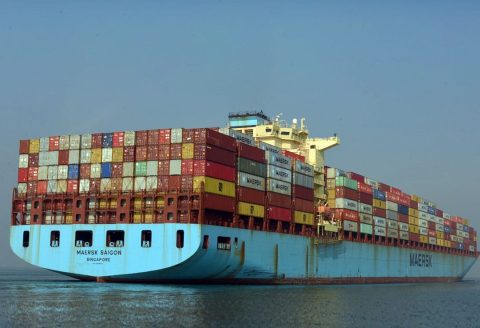
Red Sea crisis pushes freight rates skywards
The Red Sea crisis shows no signs of easing as A.P. Moller – Maersk pauses all transits through the region ‘for the foreseeable future’ and ocean freight shipping rates continue to surge. The latest data from Xeneta shows ocean freight shipping rates between the Far East and North Europe have increased 124 per cent since the crisis escalated in mid-December 2023. Rates between the Far East and US East Coast have increased by 45 per cent and rates into the Mediterranean have increased by 118 per cent.
Looking back to the end of October 2023, rates between the Far East and North Europe have increased by 201 per cent to today’s level.
Peter Sand, Xeneta Chief Analyst, believes the announcement by Maersk on Friday, 5 January, could prove to be a significant waypoint in the crisis as shippers look to protect their supply chains.
He said, “The upside to the Maersk announcement is that it gives shippers clarity to take decisive action. The downside is that the situation is going to get worse before it gets better. Shippers will be urgently looking to secure capacity with freight forwarders and carriers. They must also look at availability of equipment. You need the box as well as space on board the ship, otherwise you are in trouble.”
“Another immediate priority for shippers is to get more goods moving because this disruption will result in much higher floating inventories. For example, if a shipper had bookings on 14 vessels before the crisis, that will now be 17,” Sand said. “They need to get their act together quickly, especially with the traditional squeeze on capacity in the run up to Chinese Lunar New Year on the way.”
Read also: Shippers declare Force Majeure as Red Sea attacks continue
Sand is warning securing reliability and stability in ocean freight shipping during a black swan event such as the Red Sea crisis will come at a cost.
“Shippers are being told agreements on long-term rates will not be honoured and are being pushed onto the spot market. The budgets they agreed, sometimes as recently as last month, can be thrown out of the window,” Sand said. “This results in big differences in the amount shippers are paying and a widening gap between the market high and the market low. At times like this, shippers should not want to be paying the lowest price because ocean freight carriers will look at those contracts and deem them to be lower priority than those agreed on the spot market at higher rates.
“The over-supply of container shipping capacity we saw in the market in 2023 may not be readily available to save the day. If there is no room on the ship, your goods won’t be moved. It’s a serious risk to supply chains,” Sand said.
Read also: MSC ship attacked in the Red Sea
You just read one of our premium articles free of charge
Register now to keep reading premium articles.




